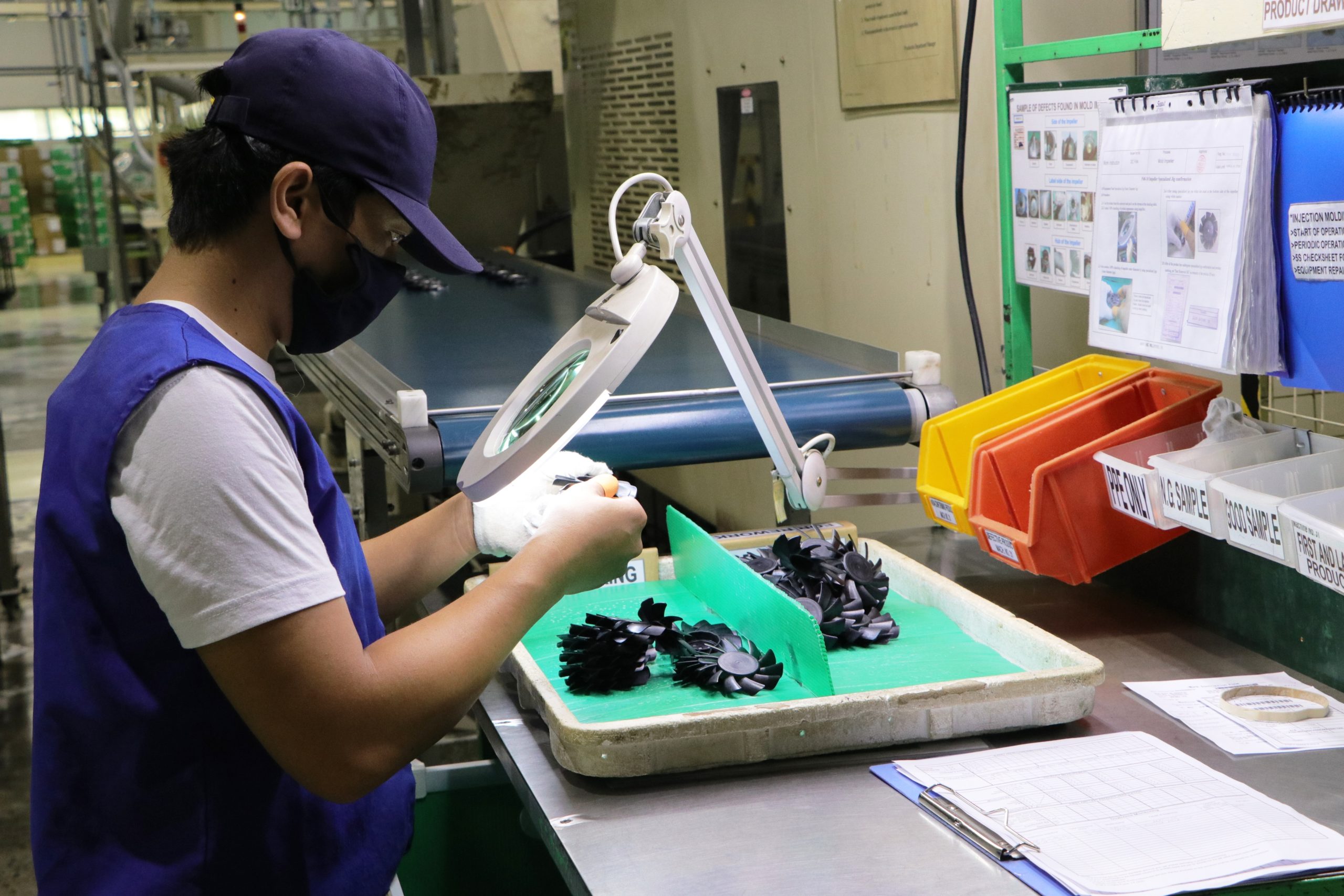
Cooling fans, one of Subic Freeport’s top export products during the COVID-19 pandemic and used for ventilators, are being assembled at Sanyo Denki Philippines Inc. PHOTO FROM SBMA
MANILA, Philippines — As the global economy continues to recover despite lingering risks from more contagious COVID-19 variants, President Rodrigo Duterte’s economic team expects a faster 10-percent growth in merchandise exports this year to regain lost ground last year.
The Cabinet-level Development Budget Coordination Committee (DBCC) during its meeting Monday also jacked up the infrastructure program for 2022 — the year Duterte steps down from office — to P1.29 trillion from P1.25 trillion previously.
The DBCC said in a statement that it raised the growth goal for goods exports from 8 percent previously “following the expected recovery in external demand.”
In 2020, shipments of Philippine-made products abroad dropped 8.1 percent to $65.21 billion due to the global trade slump inflicted by the COVID-19 pandemic, as international borders were closed at its onset to contain virus spread.
As for public infrastructure spending, the 2022 program was hiked to 5.8 percent of gross domestic product (GDP), before tapering off to P1.28 trillion or 5.3 percent of GDP in 2023, and P1.35 trillion (5.1 percent of GDP) in 2024.
The DBCC kept the gross domestic product (GDP) growth targets of 6-7 percent for 2021, 7-9 percent for 2022, as well as 6-7 percent in 2023 and 2024 “amid the declining number of COVID-19 cases in the country since the peak in April, and the gradual reopening of the economy with more targeted granular lockdowns.”
Last May, the DBCC downscaled its near-term GDP growth projections after the pandemic-induced recession spilled over to the first quarter of 2021 with a 4.2-percent year-on-year decline in economic output.
The DBCC said the yearly growth targets can be attained if the government continued to “manage risks, and continue the gradual and safe reopening of the economy, subject to the strictest compliance to minimum public health standards.”
“The intensified implementation of the prevent, detect, isolate, treat, and recover (PDITR) strategy, along with the full vaccination of residents in high-risk areas, will help build consumer and business confidence, improve our health-system capacity, and prevent community transmissions of the Delta variant,” the DBCC said.
“The relaxation of quarantine restrictions in high-risk areas must be complemented with an accelerated vaccination rollout, in order to allow more businesses to operate and consumers to participate in socioeconomic activities,” it added.
The DBCC will again review the economic growth targets after the government reports on the second-quarter GDP performance on August 10.
It still sees a return to pre-pandemic or 2019 GDP levels in 2022 — among the last to do so in the region.
The DBCC also maintained this year’s fiscal deficit program at 9.3 percent of GDP, amounting to P1.86 trillion.
The national government was expected to spend P4.74 trillion this year, while its tax and non-tax revenue collection was programmed to reach P2.88 trillion.
“Over the medium term, the deficit path will be on a downward trajectory with 7.5 percent in 2022, 5.9 percent in 2023, and 4.9 percent in 2024. This fiscal consolidation strategy will continuously be adopted by the government to ensure fiscal sustainability over the medium term, and to bring back the country’s deficit to pre-pandemic levels,” the DBCC said.
In this regard, the DBCC approved to push through with the executive’s proposal to pitch a record P5.024-trillion spending plan for next year, which will be submitted to Congress next week when it resumes session from its sine die break.
“The proposed 2022 national budget will continue to invest in building the country’s resilience amid the pandemic by prioritizing funding for COVID-19 response measures, such as health-care development and social services, while also ramping up economic growth through investments in public infrastructure,” it said.